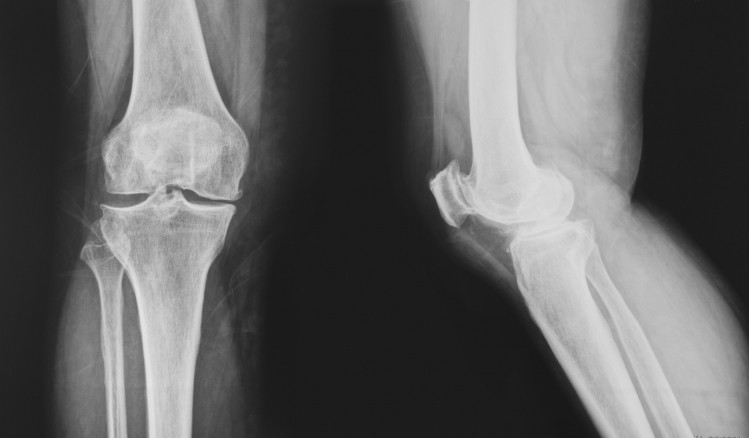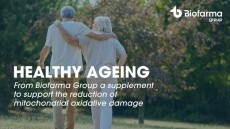Special Edition: Bone & Joint Health
Ingredients' form critical for successful bone health formula—or maybe not

First to the basics. Bones are amazing rigid organs with a complex internal structure that perform many functions beyond just providing the framework for the rest of the body. Supplements meant to support the function of this structure have to take into account those various additional things that bone does, such as produce red and white blood cells and act as a mineral depository that the body can call upon to supply vital constituents for numerous chemical reactions.
Bones also figure into to one of the first deficiency diseases to be fully described—rickets—and this formed part of the story of the discovery of vitamin D and its importance. This discovery led to one of the first public health victories, the virtual elimination of rickets, a childhood disease that can result in malformed leg bones, through vitamin D fortification in milk. (In a troubling note, the incidence of rickets, while still very low, has been seen to rise in some jurisdictions in the US in recent years.)
Minerals form the base
The base of an ideal bone health formulation would be formed by a selection of minerals to be incorporated into the bones’ protein matrix.
“There are a variety of minerals you’d put in there,” said Stephen Ashmead, a senior fellow at Balchem Corporation, which earlier this year acquired Albion, a supplier of mineral chelates. “You’d look at calcium and magnesium, since they are the main mineral products that fill the protein matrix. You’d definitely look at some zinc and boron since they are present there, too.”
There is a tendency when talking about elemental ingredients to assume that they are all pretty much alike and the choice comes down essentially to one of cost. Just having the word ‘calcium’ on the label is not enough, Ashmead said. The form of these ingredients is critical to assure that there is adequate uptake into the blood stream. Albion was one of the pioneers in this story with its extensive suite of chelated mineral ingredients.
“In general we believe that organic forms would be better. We believe that the chelates that we offer would provide the best overall bioavailability. We have several studies on our chelated minerals showing increased bioavailability,” Ashmead said. “We have a story that our chelates are safer, better tolerated and better absorbed.”
But as previously mentioned, bones are not just rigid extrusions of glued-together calcium. They are formed via a complex protein structure that needs attention from formulators, too, Ashmead said.
“There is a protein matrix that minerals help populate. There you are looking at minerals required for connective tissue, such as iron and copper, to help build that protein scaffold that the minerals go into,” he said.
Magnesium in particular has been gaining in importance in the marketplace in recent years, Ashmead said. The metal is important in the functioning of vitamin D and in stimulating the thyroid’s production of calcitonin, which acts as a bone-preserving hormone, and regulating parathyroid hormone, a function of which is to regulate bone breakdown in a number of ways.
Supporting the base
The bones are the body’s biggest store of calcium, so having enough calcium in the bloodstream to support their constant remodeling is obviously of critical importance. But how much calcium is too much? Calcium deposition in the bones is a good thing; deposits of calcium elsewhere, such as the kidneys or the lining of the blood vessels, is not. This is a question that has been raised in recent years with the results of some studies that have seemed to suggest that calcium supplementation could raise the risk of cardiovascular disease.
For Norwegian company Nattopharma, a supplier of a vitamin K2 ingredient branded as MenaQ7, that issue has been clouded by insufficient appreciation of the key role that vitamin K has, especially in its more bioactive menaquinone 7 (K2) form.
“Clearly within bone health category calcium is the core ingredient,” said Eric Anderson, Nattopharma’s senior VP of global sales and marketing.
“But recently there has been a lot of negative media attention around calcium. Most of that came from a study in New Zealand where the active participants were taking 1200 mg of of calcium citrate and were experiencing more heart attacks,” he said. That study has been refuted by a more recent meta analysis, but the damage seems to have been done, and the ‘calcium might even be bad for you’ story started to gain momentum.
“Now there is an argument that we are getting too much calcium. There was even a Dr Oz Show segment where he devoted about 10 minutes to talk about the dangers of calcium. But the New Zealand study and some others did not look at the vitamin K status of the participants,” Anderson said.
Vitamin K2 has been isolated from natto, a sticky, fermented soybean paste that is part of traditional Japanese cuisine (Nattopharma makes its MenaQ7 via a fermentation process). It’s no coincidence that Japanese eating a traditional diet had very low rates of heart disease and demonstrated good bone health, Anderson said. Vitamin K2 stimulates the function of osteoblasts, cells that form new bone, so having enough in the body helps to send calcium into the bone matrix instead of having too much in the bloodstream, where it can end up as part of an arterial plaque.
“We know that population that consume a lot of k2 have stronger, healthier bones and those populations can keep too much calcium from getting into the blood stream,” Anderson said.
The role of vitamin D
Vitamin D is also important in stimulating the cells that build bone and in regulating the activity of those cells that deconstruct bone, said prominent vitamin D research Dr Michael Holick. Dr Holick is a professor of medicine, physiology and biophysics at the Boston University School of Medicine. He has been one of the experts calling for higher levels of vitamin D supplementation, much higher in fact than what public health authorities settled upon when those guidelines were recently rewritten. The official recommendation is 600 IU/day for adults, a level that Holick believes is far too low.
“I personally take 4,000 IU a day, and all my patients are on 3,000 IU to 4,000 IU,” he said. “There continues to be a lot of evidence that 40 ng to 60 ng/mL is the ideal 25-hydroxy vitamin D level in the blood. That can be achieved if you are on a supplement regiment of between 3,000 IU and 4,000 IU daily.”
In addition to its regulation activities around calcium once the calcium is in the blood stream, vitamin D has a critical role in helping the mineral get there in the first place, Holick said. In a state of vitamin D deficiency, as little as 10% of dietary calcium might be absorbed. With sufficient vitamin D, that can rise to 30% to 40%.
“If you are not getting enough calcium through your diet your body will stimulate the osteoclasts to remove calcium from the bone. So vitamin D deficiency can and does precipitate and exacerbate osteoporosis in older people,” Holick said.
There has been much mention in this report about the various forms of vitamins and minerals. Advocates of these positions point to research that shows the specific form of a vitamin or mineral is critical to support the uptake into body of a vitamin or mineral and its function once it’s there. In the case of vitamin D this usually takes the form of strident advocacy for vitamin D3. Holick, however, is not convinced.
“The form does not matter, and I believe this is well documented. This came about because of a few studies that seemed to suggest that vitamin D2 was not as effective, and that vitamin D2 would destroy vitamin D3. But we have done studies with 1000 IU of vitamin D2 and 1000 IU of vitamin D3 and both groups achieved identical 25-hydroxy Vitamin D blood levels and we have showed that vitamin D2 does not destroy vitamin D3,” he said.
Bone & Joint Health
Experts from GNC, NBTY, Jarrow Formulas & NOW Foods will discuss the market forces, science, supply chain, and future opportunities in bone and joint health in the FREE NutraIngredients-USA Bone & Joint Health Online Event on June 29.
For more information and to register, please click HERE.















